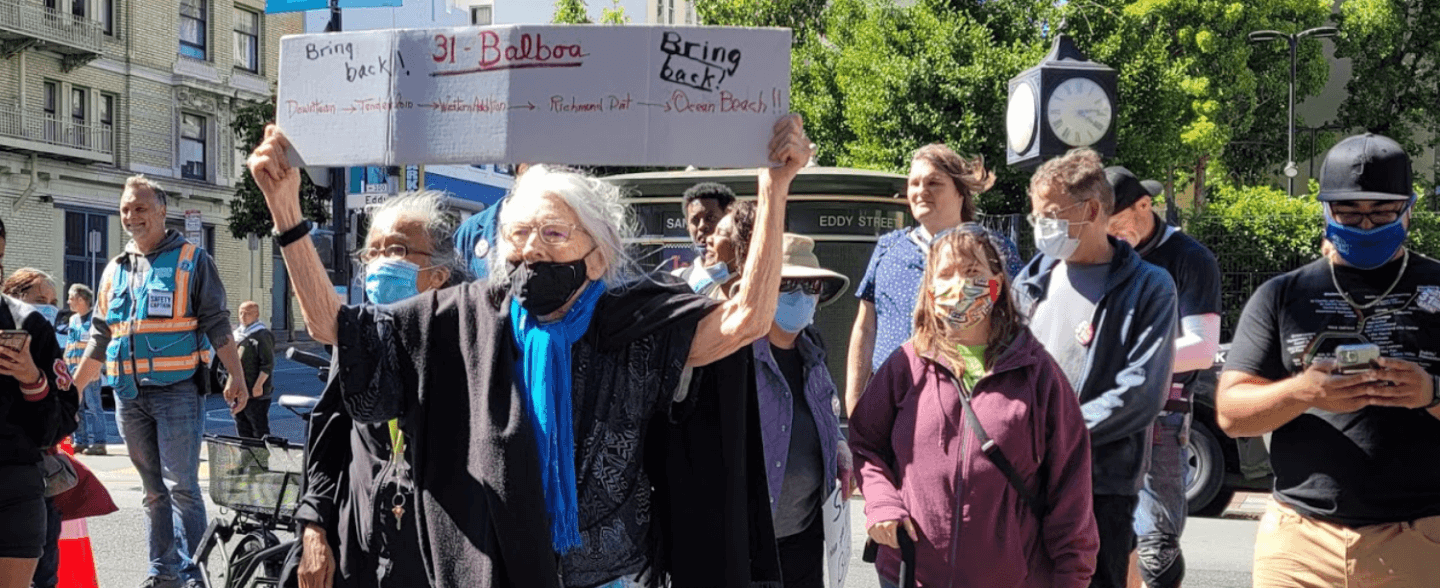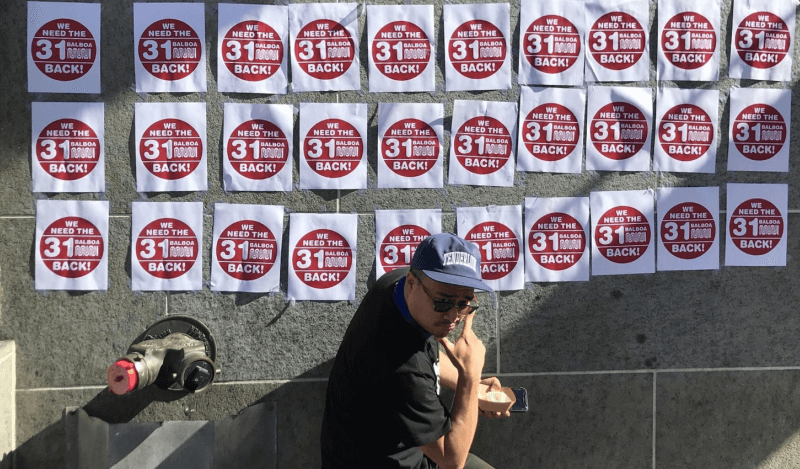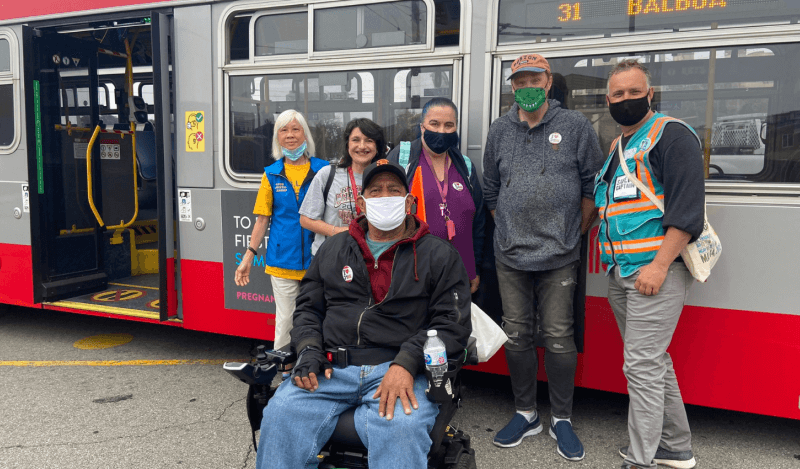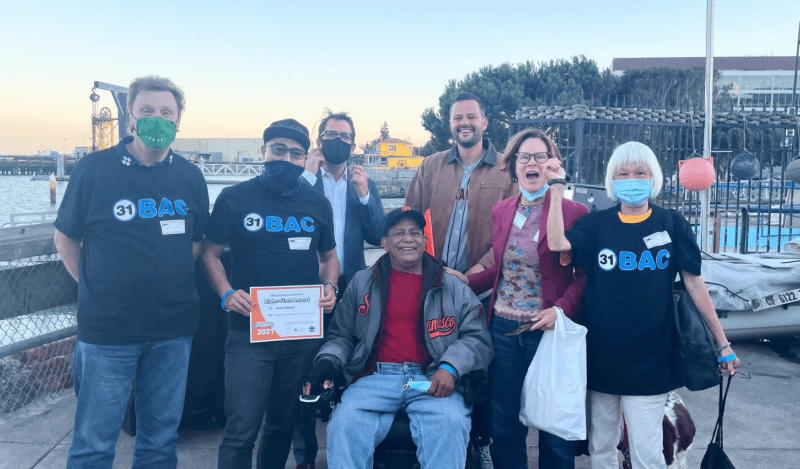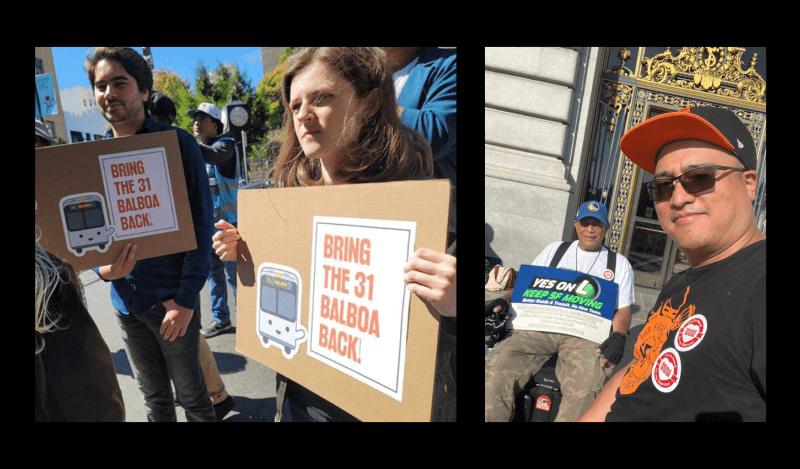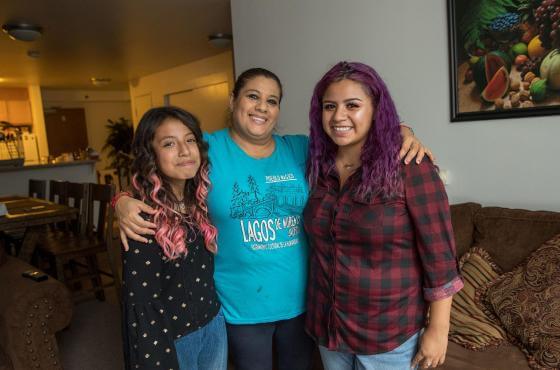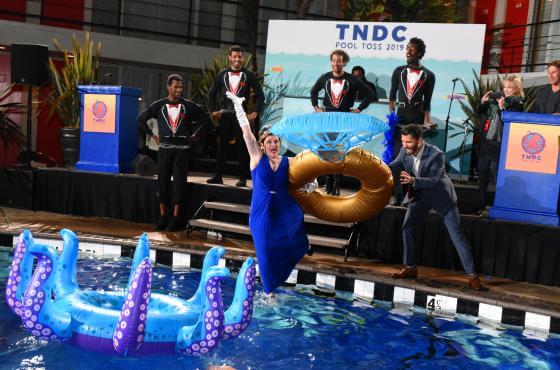Jaime Viloria works at the intersection of housing and transit justice. Jaime is a TNDC Community Organizer with a focus on pedestrian safety and fair access to transportation for the residents of TNDC and all neighbors in the Tenderloin. He also sits on the board of San Francisco Transit Riders, a nonprofit advocating for a more accessible and sustainable public transit system. Jaime played a key role in organizing the community actions that restored transit lines lost during the height of the COVID-19 epidemic.
The 27 Bryant runs north south connecting Nob Hill and SOMA and the 31 Balboa runs east west connecting the Financial District with the Richmond. Both lines passed through the heart of the Tenderloin … until they stopped running in 2020. Those lines were essential vectors of transit for the residents of the Tenderloin, Jaime explains. Yes, it’s possible to walk and catch a different bus route, but many of the residents in our community have mobility challenges—many are elderly, some are disabled.
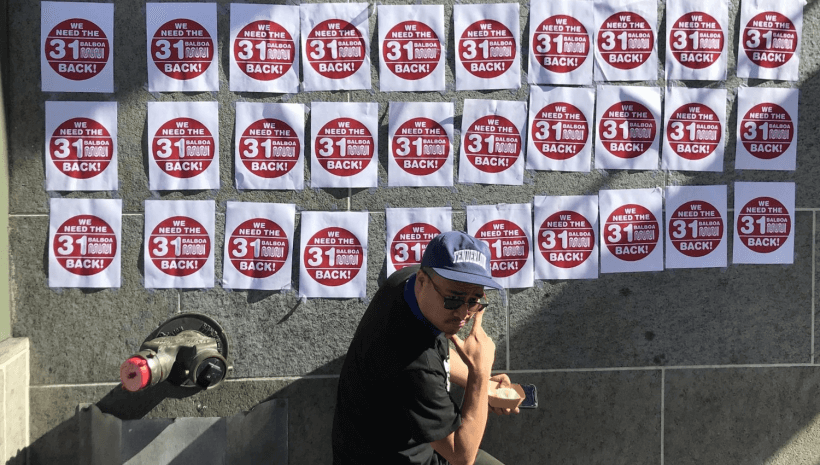
Jaime and residents of the Tenderloin, like Luis Castillo, Lisa Galinis, Laura Sinai, and James Pounders, Larry Williamson, Tammy Huynh, Christina Tucker, along with organizations like the Tenderloin People’s Congress, Tenderloin Traffic Safety Task Force, & TLCBD took to the streets in protest. And it worked! The 27 Bryant was restored in January 2021, but SFMTA had no plans to restore the 31 Balboa despite repeated community demands. So, they took to the streets again and prepared for a longer and harder fight. This time around, news of the upcoming rally made it to Supervisor Dean Preston’s office and his staff put Jaime in touch with the SF Transit Riders, transit advocates, and community leaders from other neighborhoods on the 31-Balboa route. This amped up the protest resulting in the SFMTA reinstating the 31 in August 2021.
“It’s all connected,” explains Jaime. “Not just in the sense that disparate transit activist groups from around the Bay were able to unite to bring back these missing bus lines, but the whole idea of public transit itself is about connection. That’s the point of transit!” Riders in all the neighborhoods served by these buses were affected by the loss of these routes. Riders in one district are connected to riders in another down the line.
“It’s all connected,” explains Jaime. “Not just in the sense that disparate transit activist groups from around the Bay were able to unite to bring back these missing bus lines, but the whole idea of public transit itself is about connection. That’s the point of transit!”
Even so, it’s Jaime’s concern that Tenderloin voices are heard since the residents of underserved communities can sometimes be silenced in the face of seemingly insurmountable authority. “But the truth is that we have agency and a voice when it concerns fair access to public services.” For folks in affordable housing, equitable access to public transit is part of being stably housed. To live in an affordable housing community does not mean you’re confined to your home or your community. Residents need to commute to work, get to school, visit family, or get out for fun and relaxation. In fact, to celebrate the victory of the 31 Balboa’s restoration, Jaime and a group of Tenderloin activists rode the bus all the way to the beach. That’s the power of public transportation.
Jaime prefers to conceptualize the challenges of transit in a positive way. In other words, he asks, “What could you do if public transit were better able to get you where you want to go?”
Jaime has a unique perspective on the shortcomings of public transit. “When public transit fails, especially when there are budget cuts, we tend to view it as a deficit. That puts us in the position of having to argue for the restoration of connectivity between hubs or destinations.” Jaime prefers to conceptualize the challenges of transit in a positive way. In other words, he asks, “What could you do if public transit were better able to get you where you want to go?” To that end, he’s in the process of collecting 100 mini transit stories from the residents of the Tenderloin—stories of potential, like “I would visit my family more often” or “I would go to the farmers market once a week.” This is all part of the work Jaime is conducting under the auspices of a CERI grant, which stands for the California Equitable Recovery Initiative—funds intended to serve communities facing inequities resulting from the COVID-19 pandemic. Jaime is now focused on making sure that under-heard voices are present in the transit policy space and create a pro-active approach to addressing the upcoming transit ‘fiscal cliff’ when all emergency Federal funding runs out in a few years. Through the CERI grant, Jaime, alongside other transit advocates established the Transit Justice Coalition who’s fighting for sustainable transit funding in SF and Bay Area–from advocating for State funding to creating a local ballot measure to help fund transit operations – to ensure that all communities can thrive.
